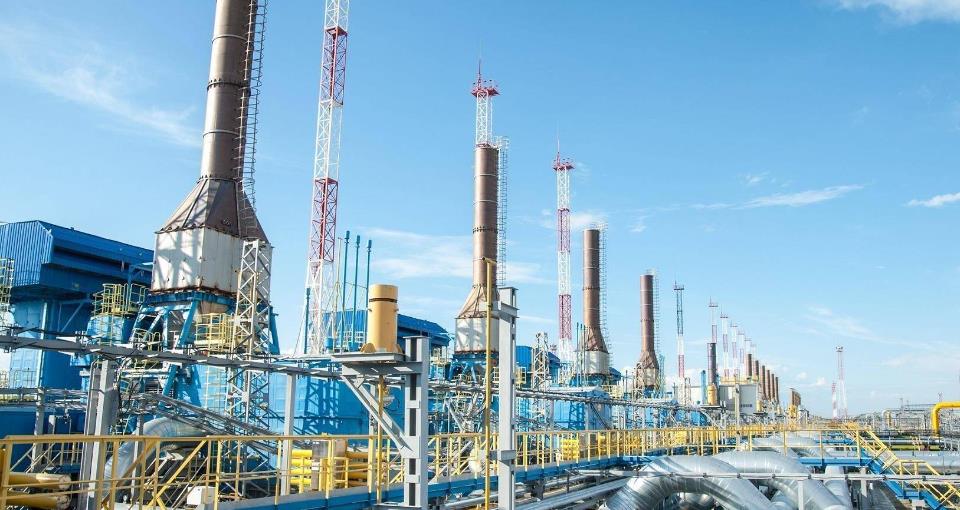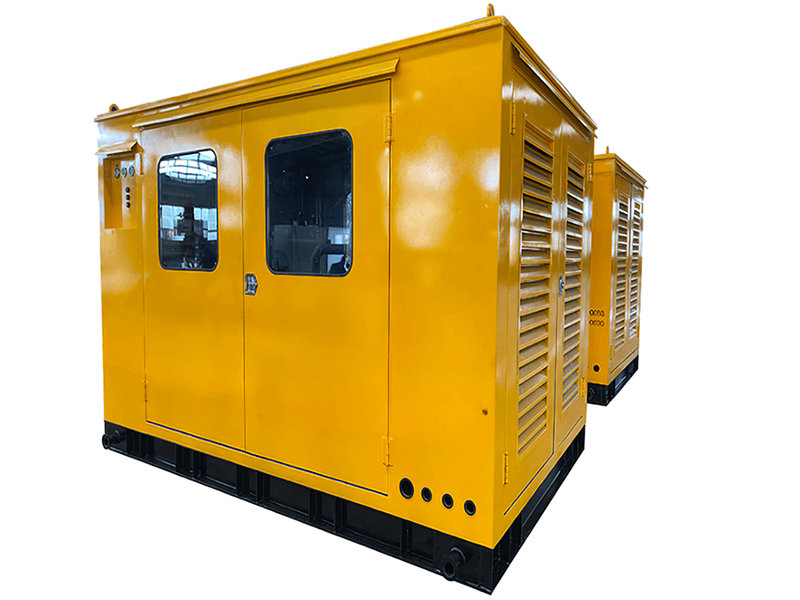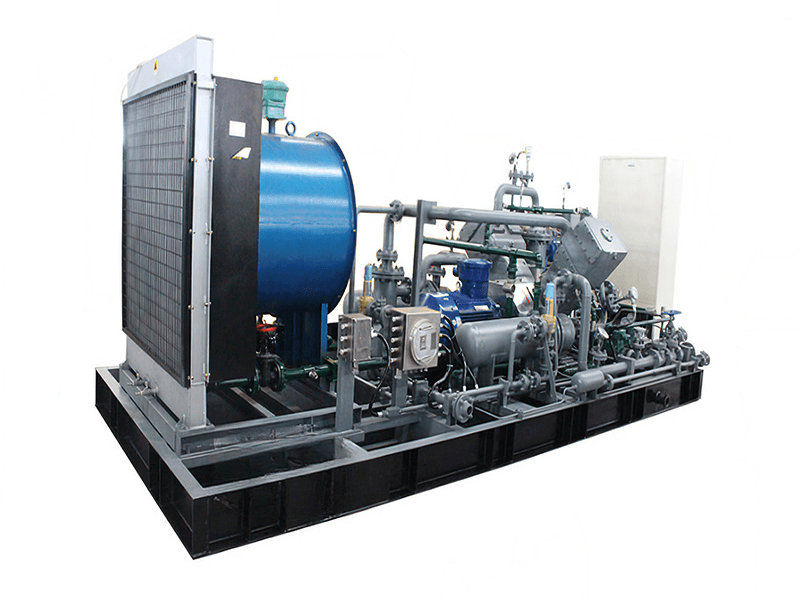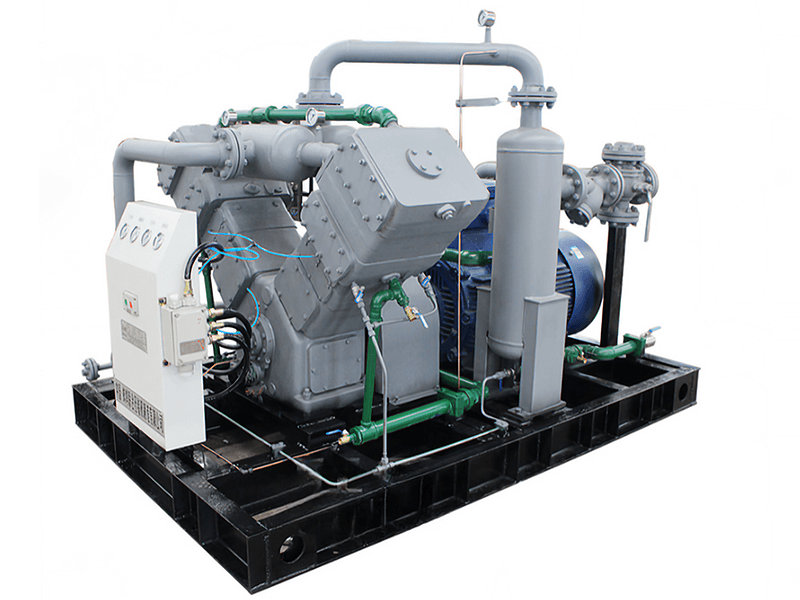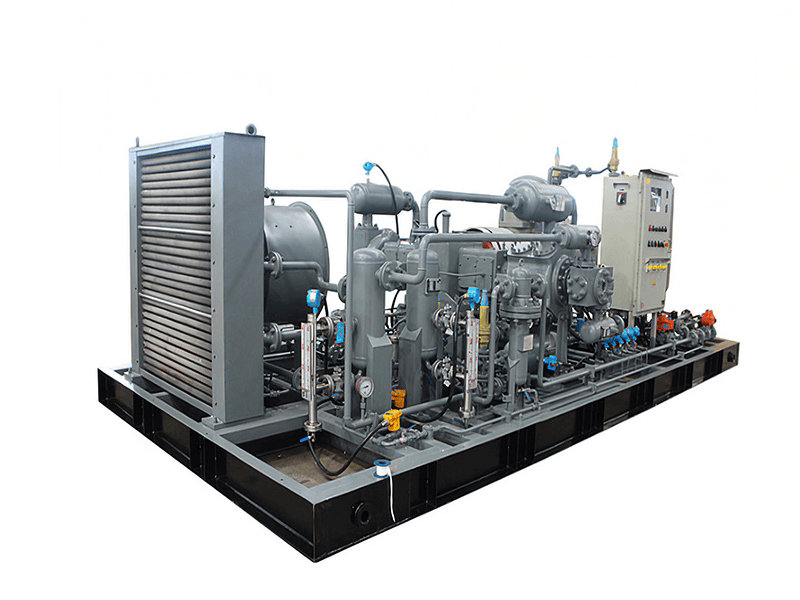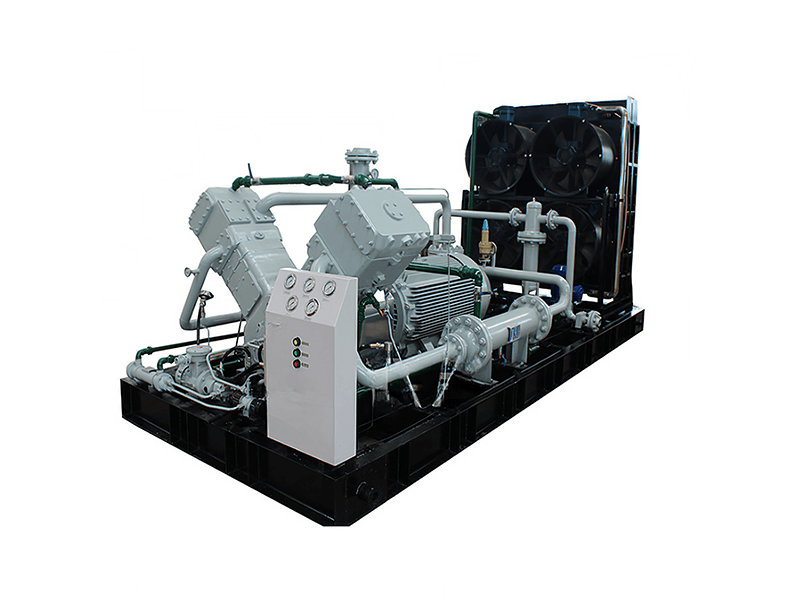Helium—the second most abundant element in the universe—is exceptionally rare on Earth. As a noble gas, it is colorless, odorless, non-flammable, and chemically inert, yet possesses four irreplaceable properties:
Ultra-low boiling point (-268.9℃) — Supreme cryogenic refrigerant
Smallest molecular diameter (0.26 nm) — Unrivaled permeability ("leak master")
High thermal conductivity — Critical coolant for nuclear reactors
Safety and inertness — Protective shield for semiconductor manufacturing
From MRI machines to rocket fuel pressurization, deep-sea diving to quantum computing, helium’s high-value applications rely on precision control by compressors.
I. Compressors: The "Circulatory Heart" of the Helium Supply Chain
Helium cannot be directly extracted from air (concentration: 0.0005%); it is primarily separated from helium-bearing natural gas (0.1%-8%). Due to its tiny, highly fugitive molecules, compressors play critical roles in every stage:
1.Helium Extraction BoostingIn LNG plants, crude helium (50%-80% purity) is separated from -162℃ LNG tail gas.
Oil-free centrifugal compressors pressurize gas to 2.5 MPa for cryogenic purification. The U.S. Bush Dome Plant processes 3 BCM/year of helium-rich gas via 4-stage centrifugal compression.
2.Ultra-Pure Helium Refinement Drive99.999% electronic-grade helium requires purification at -269℃ using liquid hydrogen.
Diaphragm compressors, with fully sealed structures, circulate helium at 15 MPa in purification loops, eliminating oil contamination. Such helium exceeds gold value per gram in chip lithography.
3. Key Power for Helium LiquefactionConverting gaseous helium to liquid (-269℃) involves history’s most challenging compression process:
Precooling: Centrifugal compressors boost to 1 MPa
Cryogenic compression: Liquid helium expanders operate at -250℃, raising pressure to 2.2 MPa
Throttling liquefaction: 25% liquid yield. Russia’s GNK-1000 liquefier produces 10 tons/day using this process.
4. Lifeline of Helium RecoveryWith helium costing $300/m³, recovery systems are essential for MRI labs and aerospace bases.
Magnetic-bearing centrifugal compressors operate in closed loops:
●Compress leaked dilute helium (0.5 bar) to 20 bar
●Purify via molecular sieves for reliquefaction
●Achieve 99.7% recovery rate in France’s ITER fusion project.
II. Helium Compressor Technology Face-Off: When Molecules Reach Minimum Size
Diaphragm compressorApplications:Ultra-pure helium transfer, labs
Technical Advantages:100% oil-free; Leakage <10⁻⁶ mbar·L/s; 300MPa pressure rating
Helium-Specific Challenges:Requires helium-tight multi-layer metal diaphragms; Flow limit <500 Nm³/h
Maglev Centrifugal compressorApplications:Large-scale liquefaction, fusion
Technical Advantages:Oil-free; 100,000 RPM frictionless operation; Intelligent surge control
Helium-Specific Challenges:Impeller clearance <0.05mm (blocks helium penetration); Cost 3× standard centrifugals
Liquid Helium Piston compressorApplications:Cryogenic cooling systems
Technical Advantages:Stable at -269℃; Cold-resistant seals
Helium-Specific Challenges:Material shrinkage at cryogenic temps requires precision; Mastered only by Linde (Germany)
Diaphragm compressorApplications:Helium-rich gas pretreatment
Technical Advantages:Contaminant tolerance; Wide flow range
Helium-Specific Challenges:Requires nano-seals (graphene-filled); Otherwise leakage >5%/day
Technical Prohibition: Rubber seals are strictly forbidden! Helium permeates standard rubber. Metal bellows or fluoropolymer seals are mandatory.
Example: SpaceX launch abort (2016) due to helium valve rubber seal failure.
III. Safety Redlines: Absolute Forbidden Zones in Helium Compression
Risk:Micro-Leakage = Catastrophic LossConsequence:0.1mm gap → $50k/day helium loss
Mitigation Solutions: 100% helium mass spectrometer testing (sensitivity: 10⁻¹² mbar·L/s); Metal cone seals (surface roughness <0.8μm)
Risk:Oil Contamination Destroys ApplicationsConsequence:1ppm oil → Liquid helium Dewar blockage (50% evaporation ↑); Wafer oil film → Chip yield crash
Mitigation Solutions: ISO 8573-1 Class 0 certification; Electro-polished chambers (Ra≤0.4μm)
Risk:Adiabatic Heating Causes Material FailureConsequence:γ=1.66 → Single-stage ΔT from 20℃ to 180℃ → Aluminum alloy impeller deformation
Mitigation Solutions: Intercooler efficiency >90%; Beryllium-copper alloy rotors
Risk:Cryogenic EmbrittlementConsequence-196℃: Carbon steel valve toughness ↓80% → Burst risk
Mitigation Solutions:Austenitic stainless steel (316LN); Invar alloy (36% Ni)
IV. Peak Cases: The Helium Era Powered by Compressors
Case 1: Qatar Helium II MegaprojectChallenge: Extract helium from lean gas (0.04% He) at viable cost
Breakthrough: World’s largest maglev centrifugal units (42 MW total)
Achievement: 210 million liters liquid helium/year (30% global supply)
Case 2: CAS Liquid Helium Plant (China)Crisis: Imported liquid helium price 10× surge → Quantum research stalled
Innovation: Developed -269℃ helium piston compressors (cryogenic seals); Built recovery system (leakage <0.1%/year)
Breakthrough: 85% self-sufficiency → Enabled "Jiuzhang" quantum computer operation
Case 3: NASA Deep Space Helium SystemsRequirements: 50MPa rocket fuel pressurization; -270℃ rover battery cooling
Technology: Titanium diaphragm compressors (1/3 weight); Space-grade leakage control (<1g/month)
Milestone: Perseverance rover helium system >1000 days failure-free
Conclusion: Forging National Strategic Equipment at the Molecular Scale
Helium compressors represent the Everest of gas compression technology—where 0.26nm molecules, -269℃ temperatures, and 99.9999% purity render conventional methods obsolete. From atomic-level sealing in diaphragm compressors to micron-scale clearance control in maglev centrifugals, each breakthrough redefines industrial limits.
Amid a worsening global helium crisis (U.S. reserve depletion, Russian plant closures, 500% price surge in 5 years), China—consuming 32% of global supply—must achieve two goals:
1.Domesticate helium extraction compressors (currently 95% import-dependent)
2.Master ultra-low-leakage recovery tech
Only then can China lead in quantum computing, fusion energy, and deep-space exploration. When compressors roar in Qinghai’s salt lake helium fields, we compress not just gas—but the lifeline of national technological sovereignty.
*(Format & Terminology Notes: Pressure units (MPa/bar), temperatures (℃), technical terms (maglev, adiabatic index γ, Ra surface roughness), and proprietary names (ITER, GNK-1000, Jiuzhang) preserved per original. Industry-standard phrasing used for cryogenic processes and leakage metrics.)*




